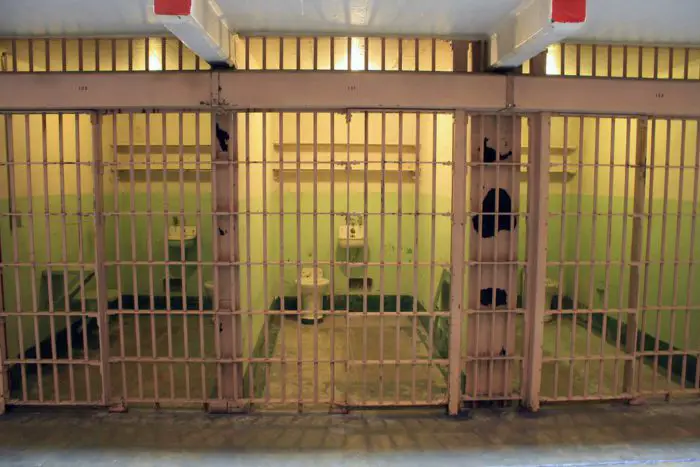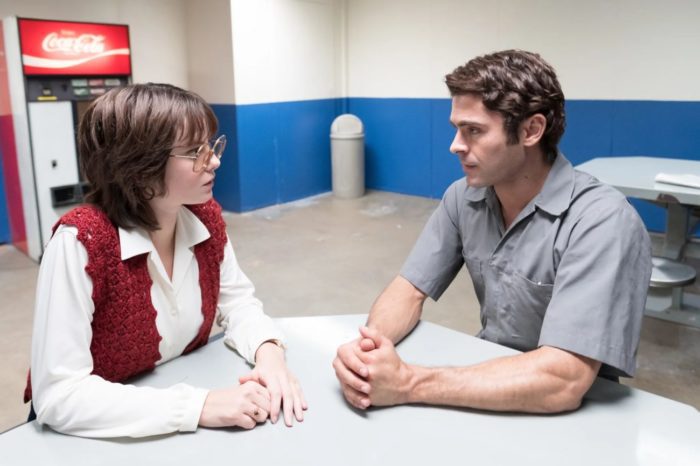While exploring true crime cases, especially high-profile criminals, such as serial killers and mass murderers, we come across stories about groupies. Admirers crowded the courtroom for a look at convicted serial killers Ted Bundy, Richard Ramirez, and Jeffrey Dahmer. All of them received scores of letters from admirers looking for a relationship. Bundy married a woman he began dating during his trial, and Ramirez married one of his pen pals while on death row. If you’re interested in true crime, you may have come across the term hybristophilia, commonly referred to as Bonnie and Clyde Syndrome.
The American Psychological Association defines hybristophilia as “sexual interest in and attraction to those who commit crimes. In some cases, this may be directed toward people in prison for various types of criminal activities.” According to the APA, hybristophilia falls under the category of paraphilia. A paraphilic behavior is when a person requires unusual behavior or fantasies to achieve sexual gratification. To be considered paraphilic behavior, this behavior must persist for at least six months. Examples of paraphilias include fetishism, frotteurism, pedophilia, exhibitionism, voyeurism, sexual masochism, sexual sadism, and necrophilia. Unlike most paraphilic behaviors, hybristophiliacs are mostly women.
Types of Hybristophilia
In a 2013 Psychology Today article, “Passion Victim: A brief look at hybristophilia,” Mark D. Griffiths, Ph.D. explains that there are two classifications for hybristophilia—passive and aggressive.
Passive hybristophilia is when someone is attracted to criminals but doesn’t engage in criminal behavior themselves. A passive hybristophiliac will excuse their partner’s criminal behavior. There’s also what is referred to as a “rescue fantasy,” where the hybristophiliac will believe that they can change or “save” the criminal.
To elaborate, Griffiths quotes a 2016 article, Psychology of Hybristophilia, from Love Art History:
“These women are usually delusional and will try to find excuses for what the criminal did. They will develop relationships with a criminal and feel that they are special—that even though their lover may have killed numerous people, he would never harm her. They usually feel that they can ‘change’ their lover and have rescue fantasies. Passive hybristophiliacs tend to put themselves in positions to be seduced, manipulated, and lied to by the people they fall for.”
On the flip side, aggressive hybristophilia is when someone is attracted to criminal behavior and engages in criminal behavior themselves. This type of hybristophiliac will assist their partner in committing crimes, for example, by covering up crimes and luring victims. Griffiths quotes Love Art History:
“They are attracted to their lovers because of their violent actions and want to receive love, yet are unable to understand that their lovers are psychopaths who are manipulating them. Both passive and aggressive hybristophiliacs tend to end up in abusive or unhealthy relationships.”

Possible Causes
As to what could be an underlying psychological cause for hybristophilia, Griffiths cites sexologist Professor John Money. According to Money, a “reverse operant conditioning” process is at work, to which he attributes other paraphilic behaviors. Reverse operant conditioning occurs when a person begins to convert experiences that, through repetition, elicit the opposite emotion to the one originally felt. According to Money, the individual “converts negative into positive, tragedy into triumph, and aversion into addiction […] The novice whose apprehension amounts to sheer terror at first may, after very few trials, discover that terror transmogrifies into exhilaration and ecstasy as if the brain had released a flood of its own opiate-like endorphins. Thereafter, the thrill returns with each repeat, totally replacing terror.”
Examples are bungee jumping or riding a roller coaster.
Griffiths goes on to talk about the book Women Who Love Men Who Kill (1991) by Sheila Isenberg. Isenberg spoke with several women who were involved in relationships with convicted criminals. Many were professionals who worked in different fields, such as teachers and nurses. These women had relationships with convicted criminals via mail and occasional visits.
Griffiths writes that the fact that their significant other is incarcerated may make these women feel safe or in a position of power. Many sources say that hybristophiliacs usually have low self-esteem and a history of violent and abusive relationships.
Hybristophiliacs want a partner who’s safe, where they feel they’re in control of the interaction which is usually positive (they don’t have to live with or “put up” with him). Other hybristophiliacs may want to “save” the criminal while others may seek excitement, fame, and notoriety.
Griffiths cites writer Corey Vitello from a 2006 book chapter review The Myth of a Psychiatric Crime Wave: Public Perception, Juror Research, and Mental Illness as confirming these commonalities in hybristophiliacs. Griffiths writes: “However, Vitello also points out that many women are not victims at all and simply ‘want to sublimate their violent tendencies by collaborating with a perpetrator of violence.'”
I’d like to explore three women who have been referred to as hybristophiliacs. Each one had a relationship with a serial killer. These women are Carole Ann Boone, Doreen Lioy, and Veronica Compton.

Ted Bundy’s Death Row Bride: Carole Ann Boone
Carole Ann Boone met convicted serial killer Ted Bundy in 1974, years before exchanging vows with him during his trial in 1979. He was convicted of three murders in Florida and received the death penalty. Many years after his conviction, Bundy confessed to killing 30 young women in multiple states from 1974–1978. He was executed on January 24, 1989.
In a 2020 Women’s Health article, “Who Was Ted Bundy’s Wife Carole Boone From ‘Falling for a Killer,’ And What Happened To Her?,” Kristen Canning and Jennifer Nied write that Boone and Bundy’s relationship was platonic until after Bundy’s arrest in Florida. The two worked for Washington State Emergency Services, where, in a creepy and bizarre twist, Bundy assisted with searching for women that he killed. At the time, Boone was a single mother with a son, James. She was involved in a relationship with a man she described as “large and unpleasant.”
According to Canning and Nied, Boone is quoted as saying that she liked Bundy immediately. The writers quote Boone from the book, The Only Living Witness: The True Story of Serial Sex Killer Ted Bundy by Stephen Michaud and Hugh Aynesworth, as saying, “He struck me as being a rather shy person with a lot more going on under the surface than what was on the surface. He certainly was more dignified and restrained than the more certifiable types around the office.”
Canning and Nied quote Trish Wood, producer/director of the docuseries Falling for a Killer, giving her impression of who Boone was: “She was a woman of great depth and intelligence and seemed to be, based on what Diana [Smith, Boone’s best friend] said, really irretrievably broken, which made her vulnerable to a guy like that.”
Boone believed in Bundy’s innocence. During Bundy’s trial, she moved with her son from Washington to Florida.
Wood added that, combined with her affection for Bundy, Boone had a group of like-minded people validating her belief in Bundy’s innocence. Perhaps having a group of other people around her agreeing with her “fed” her belief in his innocence. Wood said, “when you’re in love, you want to be fed that.”
Bundy did his homework and decided to take advantage of a Florida law that states that a couple can marry themselves, so to speak. All they have to do is declare themselves married in front of a judge. Boone and Bundy made their declaration when Boone took the stand as a character witness. It was speculated that Bundy did this to win sympathy from the jurors. Canning and Nied quote Bundy’s response: “We didn’t do this for your benefit. It was the only chance to be in the same room together where the right words could be said. It was something between she and I.”
So what was a marriage on death row like? Apparently, the couple had the opportunity to be intimate. Bundy wasn’t allowed conjugal visits. However, according to more than one source, including Boone herself, the guards looked the other way during visits. The movie Extremely Wicked; Shockingly Evil and Vile (2019) includes a scene depicting Boone (Kaya Scodelario) and Bundy (Zac Efron) having sex in the visiting room behind a vending machine.
Canning and Nied quote Boone from The Ted Bundy tapes: “After the first day, they [the guards] just, they didn’t care […] They walked in on us a couple of times.” As a result of their vending machine hook-ups, Boone did become pregnant. She gave birth to a baby girl in October 1981 who she reportedly named Rosa. Boone, her adult son, James, and Rosa visited Bundy regularly. If you look it up, there are pictures of the four together during visits.
Things continued this way up until 1986—three years before Bundy’s execution. Boone divorced Bundy and was nowhere to be found on the day of his execution. It’s speculated that a possible reason for the divorce is Bundy’s alleged affair with one of his attorneys, Diana Weiner. Another proposed reason is that Bundy did eventually start confessing.
Needless to say, Bundy’s confessions left Boone feeling stunned, shocked, and betrayed. Canning and Nied quote Bundy’s lawyer, Polly Nelson, from her book, Defending the Devil: My Story as Ted Bundy’s Last Lawyer as saying, “Boone felt ‘deeply betrayed’ and was ‘devastated by his sudden wholesale confessions in his last days.'”
Canning and Nied reference People as reporting that Boone stopped visiting Bundy two years before his 1989 execution. Reportedly, Bundy tried calling Boone the day of his execution. She didn’t answer the phone.
According to Canning and Nied, it’s speculated that Boone took Rosa, changed their names, and moved out of Florida. She reportedly died in a retirement home in 2018.

Bride of the Night Stalker: Doreen Lioy
Doreen Lioy, a freelance magazine editor from Burbank, California, was reportedly struck by what she saw as “vulnerability” in convicted serial killer Richard Ramirez.
Dubbed “The Night Stalker,” Ramirez terrorized Southern California from 1984–1985 in a series of home invasions during which Ramirez raped, tortured, and murdered his victims. Ramirez was convicted of 13 murders, five attempted murders, 11 sexual assaults, and 14 burglaries. His victims were men and women of all ages, including the elderly, and multiple races: white, Latino, and Asian.
According to Andrea Pak’s 2020 Marie Claire article, “Where Is Doreen Lioy, Wife of ‘Night Stalker’ Richard Ramirez, Now?,” Lioy began writing to Ramirez in 1985 after seeing his arrest on the news. Soon, Lioy was making trips to San Quentin to visit Ramirez four times a week. As their relationship progressed, Lioy’s family disowned her. Park quotes Lioy’s twin sister from a 1996 interview with the San Francisco Examiner: “It’s unfortunate for me that I’ve been linked with all of this. I was taken aback by the news. To be related by birth is fine. […] I don’t want to be a part of this. It’s been a painful event for the family.”
Ramirez proposed in 1988, but the two weren’t married until 1996. Ramirez’s brother, sister, and niece attended the ceremony at San Quentin. His lawyers and someone who was writing a book in support of Ramirez’s innocence also attended. Lioy wore a white dress. Ramirez reportedly insisted that he couldn’t have a gold wedding band because, as a Satanist, he couldn’t wear gold for some reason. He was given a platinum band instead.
Park writes that Lioy told the Examiner in 1996 that she loved Ramirez “more than anything in the world.” In 1997, she told CNN, “I think he’s really a great person. He’s my best friend; he’s my buddy.” Ramirez wasn’t allowed conjugal visits, and there weren’t any reported forbidden vending machine hook-ups between the Night Stalker and his bride. Lioy described being married to Ramirez as a “lonely existence.” Like Boone, Lioy believed that Ramirez was innocent. She added that she dreamed of “being with Richard.”
However, like with Boone and Bundy, wedded bliss behind bars wouldn’t last forever. Ramirez died of complications from B-cell lymphoma in 2013. Parks cites a Daily Beast article published shortly after Ramirez’s death, reporting that his body wasn’t claimed for several weeks. Parks references a spokesperson from San Quentin as stating that starting in 2010, Ramirez wasn’t allowed personal visits and that he refused visits during his last days.
So, what could have prompted Lioy’s change of heart? It’s speculated that Lioy decided to end her relationship with Ramirez in 2009 after Ramirez’s DNA came up as a match to a cold case, which tied Ramirez to the rape and murder of a nine-year-old girl in San Francisco in 1984. Since then, Lioy has disappeared from the public eye. She surfaced in 2019 as “Doreen Ramirez” in her father’s obituary.
We’ve explored the stories of two women who both married convicted killers. Both Boone and Lioy have been designated as examples of hybristophiliacs in the media. But do they meet the criteria? Both women proclaimed their husbands’ innocence until there was confirmation of their guilt (Bundy’s confession and Ramirez’s DNA). After having irrefutable evidence of their guilt, they severed ties with them.
Both women did seem as if they had the urge to “save” their husbands by proving their innocence. Lioy even described that she viewed Ramirez as “vulnerable,” or in need of protection. While not much is known about Lioy’s past, we know Boone had at least one relationship with a “large, unpleasant man.” Not much more was said about it. So, we don’t know if she fits the profile of what’s been described as a typical hybristophiliac with a history of abusive relationships. Whether or not they are hybristophiliacs is a matter of opinion.

Copycat: Veronica Compton & The Hillside Strangler
Veronica Compton claimed that she first contacted convicted murderer Kenneth Bianchi in 1980 because she was writing a script about a female serial killer and wanted to do research. However, their relationship would take a much different turn that ended with Compton serving 20 years in prison.
Bianchi was serving multiple life sentences for the Hillside Strangler killings, which included the rape and murder of 10 women and girls from 1977 and 1978. Bianchi, along with his cousin Angelo Buono, was convicted of the murders.
In the 2019 A&E True Crime article “The Woman Who Tried to Kill for the Hillside Strangler,” Becky Little writes that Compton wrote to Bianchi over several months and visited once. During these visits, Compton claimed that she was going through a dark period in her life. She was struggling with addiction and trauma from childhood sexual abuse. Compton alleges Bianchi took advantage of her and manipulated her. However it happened, the two cooked up a scheme to “prove” Bianchi’s innocence. The plan was for Compton to commit a copycat Hillside Strangler type killing so police would think the killer was still free, eventually leading to Bianchi’s release.
In September 1980, Compton posed as a pregnant woman and went to a bar in Bellingham, Washington. Little cites the Spokesman Review as reporting that the Washington Department of Corrections records confirm that Compton even brought a vial of some man’s semen to plant at the scene to make it look as if the victim was raped. Compton got the attention of 26-year-old Kim Breed, who accompanied Compton back to a motel room. Breed narrowly escaped Compton as she tried to strangle her with a ligature. Breed reported the crime. Compton was sentenced to life with the possibility of parole.
Compton’s time at Washington Corrections Center for Women in Gig Harbor was far from uneventful. She had a pen pal in convicted serial killer Doug Clark. Dubbed the “Sunset Strip Killers,” Clark and his girlfriend, Carol Bundy, were convicted of six murders of young women in the Los Angeles area. Little writes, “It’s unclear whether Compton knew who Clark was when he began writing to her, or what the nature of their relationship was. Compton has disputed claims that they were in love or engaged.”
Compton managed to escape from prison in July 1988. Reportedly, Compton had a son whom she gave birth to at age 17 and escaped in an attempt to see him. She was apprehended in Arizona a week and a half later.
Compton developed her own prison romance when she struck up a correspondence with James Wallace, a political science professor at Eastern Washington University. She started writing to Wallace in 1987 after hearing one of his lectures at the prison. Their correspondence continued for two years before Wallace divorced his wife of 38 years and married Compton in a prison ceremony in 1989. She even convinced Wallace to adopt her son. She and Wallace had a child together, a daughter, born in 1993.
Compton was paroled in 1996. She was living with Wallace and their daughter. However, happily ever after was not to be. After two weeks, Compton violated her parole, plus a social worker reported inappropriate and strange behavior during a visit. Compton allegedly answered the door naked and had paintings described as pornographic on the walls. Little writes that “Compton disputed that she answered the door naked, and attorneys and parole officials disputed whether the paintings were inappropriate.” In addition to all this, Little cites the Seattle Times as reporting that Compton wasn’t attending required visits with her counselor.
Compton went back to prison and was paroled again in 2003. After her release, Compton published a book, Eating the Ashes: Seeking Rehabilitation within the US Penal System. Other than that, it seems that Compton has managed to stay out of trouble since her second prison stay. Bianchi is still incarcerated and still maintains his innocence.
With Veronica Compton, we have what sounds like an extreme case of aggressive hybristophilia. She went as far as attempting to commit a copycat crime to get a convicted killer out of prison.
Compton claimed that she had a history of abuse, therefore fitting the hybristophiliac profile. It sounds like Compton was perhaps an object of desire for hybristophiliacs herself.
Hybristophilia or not, these three stories are interesting nonetheless. Boone, Lioy, and Compton all crossed the line in different ways and did the unthinkable when each said “I do” to a convicted serial killer.



